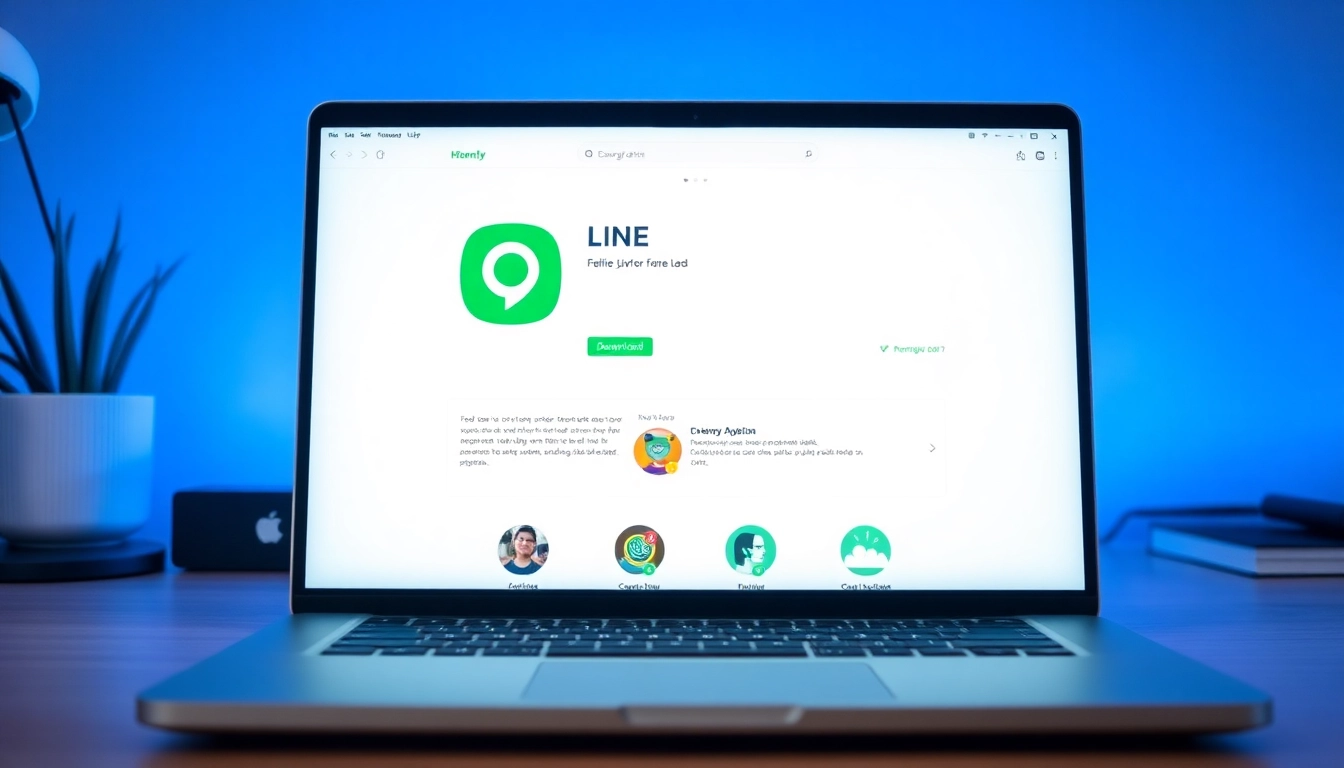Understanding the Virtual Audience System
Definition and Key Features
The Virtual Audience System (VAS) is an innovative platform designed to facilitate interactive and engaging online events. By leveraging cutting-edge technology, VAS enables organizers to create dynamic experiences that mirror, if not enhance, traditional in-person gatherings. This system operates through a combination of video streaming, live chat functionalities, and interactive tools like polls and Q&A sessions. Key features often include:
- Real-Time Engagement: Participants can interact with presenters and each other instantly through chat features, raising hands, or participating in polls.
- Analytics Dashboard: Organizers can access vital data regarding audience engagement, attentiveness, and feedback throughout the event.
- Customizable Interfaces: Brands can tailor the presentation and interface to suit their identity, ensuring a cohesive experience.
- Multimedia Support: The ability to incorporate videos, slideshows, and other media types enhances the presentation effectiveness.
Importance in Modern Events
As the landscape of events shifts towards virtual platforms, the importance of a robust Virtual Audience System cannot be overstated. With global audiences accessible at a click, organizations can break geographical barriers while fostering inclusivity. It allows for:
- Cost Efficiency: Reducing travel and venue costs while expanding reach to a larger audience.
- Flexibility: Attendees can join from anywhere, making it easier for different time zones to participate.
- Data-Driven Insights: Real-time feedback mechanisms enable organizers to adapt during the event and analyze success post-event.
How It Differs from Traditional Systems
Traditional audience systems primarily focus on in-person engagement, relying heavily on physical attendance and face-to-face interactions. In contrast, a Virtual Audience System capitalizes on technology to facilitate interaction and engagement without physical presence. Key differences include:
- Accessibility: VAS allows for an unlimited number of participants, while traditional venues are limited by physical space.
- Design and Creativity: Virtual platforms often allow for more creative and engaging presentations with interactive formats impossible in a physical space.
- Real-Time Data Utilization: The immediacy of feedback tools enables quick adjustments, enhancing engagement levels compared to traditional systems.
Setting Up Your Virtual Audience System
Choosing the Right Platform
Selecting the appropriate platform is critical for the success of a virtual audience system. Considerations include:
- User Experience: The interface should be intuitive for both hosts and attendees to minimize technical difficulties.
- Support for Interactive Features: Look for platforms offering integrated chat, polling, and Q&A functionalities.
- Reliability and Scalability: Ensure that the platform can handle the expected audience size without performance issues.
- Integration Capabilities: The system should seamlessly integrate with other tools, such as CRM and marketing platforms.
Essential Hardware and Software Requirements
Before launching into your virtual event, it is important to have the right hardware and software. Essential requirements typically include:
- Hardware:
- High-quality camera for clear video transmission
- Microphone to ensure sound clarity
- Stable internet connection with adequate bandwidth
- Computers or devices capable of running the chosen software smoothly
- Software:
- The selected virtual audience platform
- Video editing software (if creating pre-recorded material)
- Collaboration tools for team communication (e.g., Slack, Zoom)
Step-by-Step Installation Guide
Setting up your virtual audience system involves several steps to ensure everything runs smoothly. Here’s a concise guide:
- Research and Choose a Platform: Analyze various options, focusing on your specific event needs.
- Register and Configure: Create an account and customize your event settings, including branding elements and engagement tools.
- Test Equipment: Conduct thorough tests of all hardware and software to identify and fix any issues beforehand.
- Send Invitations: Create and distribute invitations with all necessary details including links, dates, and times.
- Conduct Rehearsals: Schedule practice runs to ensure that the speakers are familiar with the platform and any technical aspects.
Engaging Your Audience Effectively
Strategies for Interactive Sessions
Audience engagement is crucial for virtual events. Here are effective strategies to foster interaction:
- Icebreaker Activities: Initiate conversations with engaging icebreakers that encourage participation.
- Live Polls and Quizzes: Incorporate real-time polls to stimulate discussions and gather instant feedback.
- Breakout Sessions: Divide participants into smaller groups to encourage active discussions on focused topics.
- Gamification: Utilize game-like elements such as scoring and rewards to keep the audience invested.
Utilizing Real-time Feedback Tools
Implementing real-time feedback tools allows you to gauge the audience’s reactions throughout the event. Tools include:
- Live Chat: Encourage participants to share thoughts, questions, and comments immediately.
- Instant Polls: Use these to solicit opinions on specific topics or gauge understanding of the material presented.
- Feedback Surveys: Post-event surveys to assess attendee satisfaction and identify areas for improvement.
Case Studies of Successful Engagement
Analyzing successful virtual events can provide insight into effective engagement strategies. Consider the following examples:
- Webinar Series by Company X: By utilizing a combination of live Q&As and engaging presentations, they achieved 75% participant interaction rates.
- Virtual Product Launch by Brand Y: They implemented breakout sessions for targeted group discussions that increased attendees’ interest in the product by 40%.
- Online Conference by Organization Z: Through gamification strategies, they maintained high levels of energy and interaction, resulting in participant feedback scores exceeding 90% satisfaction.
Measuring Success with Your Virtual Audience System
Key Performance Indicators to Monitor
To evaluate the success of your VAS, there are several key performance indicators (KPIs) to consider:
- Engagement Rate: Measure how actively participants interacted with the content through comments, polls, and chats.
- Attendance vs. Registration: Analyze the number of attendees compared to registered participants to gauge interest.
- Content Recall: Use follow-up assessments to measure how well participants retained the material presented.
- Post-Event Feedback Scores: Collect ratings and comments from attendees to understand their overall experience.
Tools for Data Collection and Analysis
Utilizing the right tools to collect and analyze data is essential for improving future events. Some tools include:
- Google Analytics: Track website engagement if your platform uses a web-based interface for registration and streaming.
- Poll Everywhere or Slido: Utilize these for real-time polling and engagement analytics.
- SurveyMonkey: Create post-event surveys to gather participant feedback effectively.
Adjusting Your Approach Based on Insights
Once you’ve collected data, it’s crucial to interpret it correctly to influence future events. Key steps include:
- Analyze Trends: Look for patterns in the data, such as peak engagement times or preferred types of content.
- Implement Feedback: Directly apply participant suggestions to enhance the audience experience in later events.
- Set New Goals: Based on insights, establish new objectives for the next virtual event to drive continuous improvement.
Future Trends in Virtual Audience Systems
Advancements in Technology
The landscape of virtual audience systems is ever-evolving. Future advancements may include:
- Artificial Intelligence: Enhanced AI tools that automate engagement processes and provide predictive analytics.
- Augmented and Virtual Reality: Integration of AR/VR technologies for creating immersive event experiences.
- Improved Security Features: Enhanced security measures to protect user data and ensure safe participation.
Evolving Expectations from Audiences
As familiarity with virtual events increases, so do audience expectations. Future attendees will likely demand:
- Enhanced Interactivity: More opportunities for audience participation and interaction during events.
- Higher Quality Content: Expectation for richer, more engaging content that’s tailored to their interests.
- Customized Experiences: Personalization based on user behavior and preferences will become a new norm.
Preparing for the Next Generation of Online Events
Organizations must prepare for the future by adopting flexible strategies accommodating technology and audience shifts. Steps include:
- Investing in Training: Equip your team with the skills needed to handle advanced technologies and live audience interactions.
- Prioritizing Engagement: Develop a culture that focuses on driving engagement consistently across all platforms.
- Continuously Innovating: Stay ahead of trends by regularly updating technology and strategies based on emerging practices.



